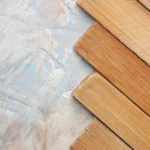Self-leveling epoxy resin is a popular choice for flooring, countertops, and other surfaces due to its durability, smooth finish, and aesthetic appeal. However, to achieve the best results, understanding the curing process is crucial.
This article will delve into the intricacies of curing self-leveling epoxy resin, highlighting important factors, tips for optimal curing, common issues, and how to avoid them.
What is Self-Leveling Epoxy Resin?
Self-leveling epoxy resin is a two-part mixture consisting of epoxy resin and a hardener.
When combined, they create a chemical reaction that transforms the liquid mixture into a hard, durable surface. This type of resin is commonly used for floors in residential, commercial, and industrial settings due to its ability to create a seamless, high-gloss finish.
Benefits include resistance to chemicals, impact, and abrasion. This makes it an ideal choice for high-traffic areas like garage floors.
The Curing Process Explained
Curing refers to the process where the epoxy resin mixture hardens into a solid state. This occurs through an exothermic chemical reaction between the epoxy resin and the hardener.
The curing process can be broken down into several stages:
- Initial Mixing: This is when the resin and hardener are combined and mixed thoroughly.
- Pot Life: The period during which the mixed epoxy remains workable.
- Gel Time: The phase when the epoxy starts to gel and becomes tacky.
- Full Cure: The point at which the epoxy has completely hardened and reached its maximum strength.
For a more detailed discussion of the epoxy curing process, consider visiting specialized websites like Apex Epoxy Flooring.
Factors Influencing the Curing Process
Several factors can significantly impact the curing process of self-leveling epoxy resin. Understanding these variables is crucial to achieving a smooth, durable finish.
Listed below are some of them:
Temperature
Temperature plays a significant role in the curing process. The ideal temperature range for curing epoxy resin is typically between 70°F and 85°F.
Temperatures outside this range can affect the curing time and the quality of the finish. Higher temperatures speed up the curing process, while lower temperatures slow it down.
Humidity
Humidity levels can also impact the curing process. Ideally, the humidity should be below 85%. High humidity can cause issues such as amine blush, a greasy film on the surface, and can affect the clarity of the epoxy.
Mixing Ratio
The correct mixing ratio of resin to hardener is crucial for the epoxy to cure properly. Deviating from the recommended ratio can lead to incomplete curing and a sticky or soft finish. It’s essential to follow the manufacturer’s instructions precisely.
Substrate Conditions
The condition of the substrate, or the surface to which the epoxy is applied, is vital. The substrate should be clean, dry, and free of contaminants. Any moisture or debris can interfere with the bonding and curing process.
Tips for Achieving Optimal Curing
Proper Mixing Techniques
Use the right tools and methods to ensure thorough mixing. Typically, a paddle mixer attached to a drill is recommended. Mix slowly and thoroughly to avoid introducing air bubbles.
Environmental Controls
Maintain the ideal temperature and humidity levels in the working environment. Using heaters or dehumidifiers can help control these factors if necessary.
Application Techniques
Apply the epoxy evenly, using a notched trowel or roller to spread it out. Be mindful of working within the pot life to ensure a smooth application. Avoiding air bubbles can be achieved by using a heat gun or a torch to gently pass over the surface.
Curing Time Management
Allow adequate time for each stage of the curing process. Rushing can lead to defects and a weaker final product. Patience is key, especially when waiting for the full cure before subjecting the surface to heavy use.
Common Issues During Curing and How to Avoid Them
Incomplete Curing
Incomplete curing can occur due to incorrect mixing ratios, low temperatures, or insufficient mixing. To prevent this, follow the manufacturer’s instructions carefully and ensure proper environmental conditions.
Surface Defects
Defects like bubbles, craters, and fish eyes can be caused by contamination or improper application techniques. To avoid these, ensure the substrate is clean and use a heat gun to remove bubbles.
Discoloration and Cloudiness
Discoloration or cloudiness can result from high humidity or contaminants in the resin or hardener. Keeping the working environment clean and controlling humidity can help maintain clarity and color.
Conclusion
Understanding the curing process of self-leveling epoxy resin is essential for achieving a flawless finish.
By considering factors like temperature, humidity, and proper mixing techniques, and by following best practices for application and curing time management, you can ensure a successful project.
Paying attention to these details will help you avoid common issues and achieve the durable, high-gloss surface that makes self-leveling epoxy resin a top choice for various applications. If you have specific questions or need professional advice, reaching out to experts in epoxy resin applications can be beneficial.


